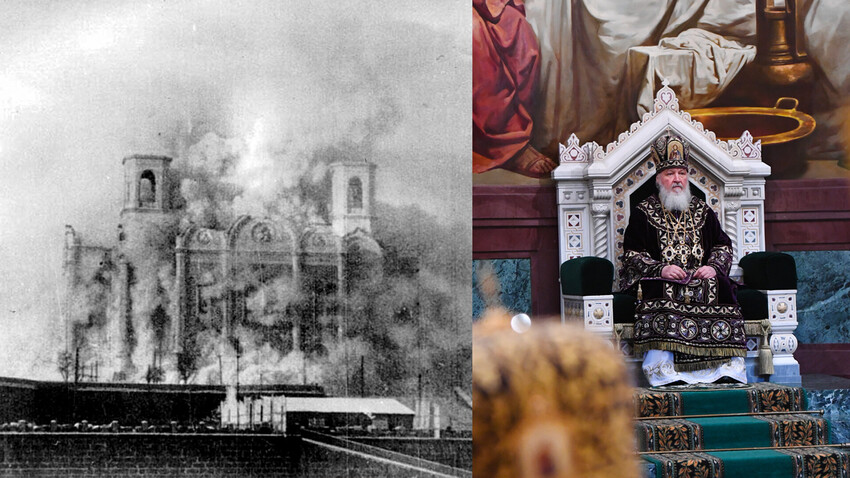

A total of 48 high reliefs were installed on the cathedral's facade, depicting scenes from the Bible and Russian history, as well as saints whose commemoration days fell on the dates of battles of the Patriotic War of 1812. Interestingly, the scenes were selected by St. Philaret himself, while a large part of the 19th century high reliefs were executed by sculptor Alexander Loganovsky. For a long time now, some of the original compositions – several scenes and individual fragments – have been kept at Moscow's Donskoy Monastery, which, during the Soviet period, housed the Museum of Architecture.
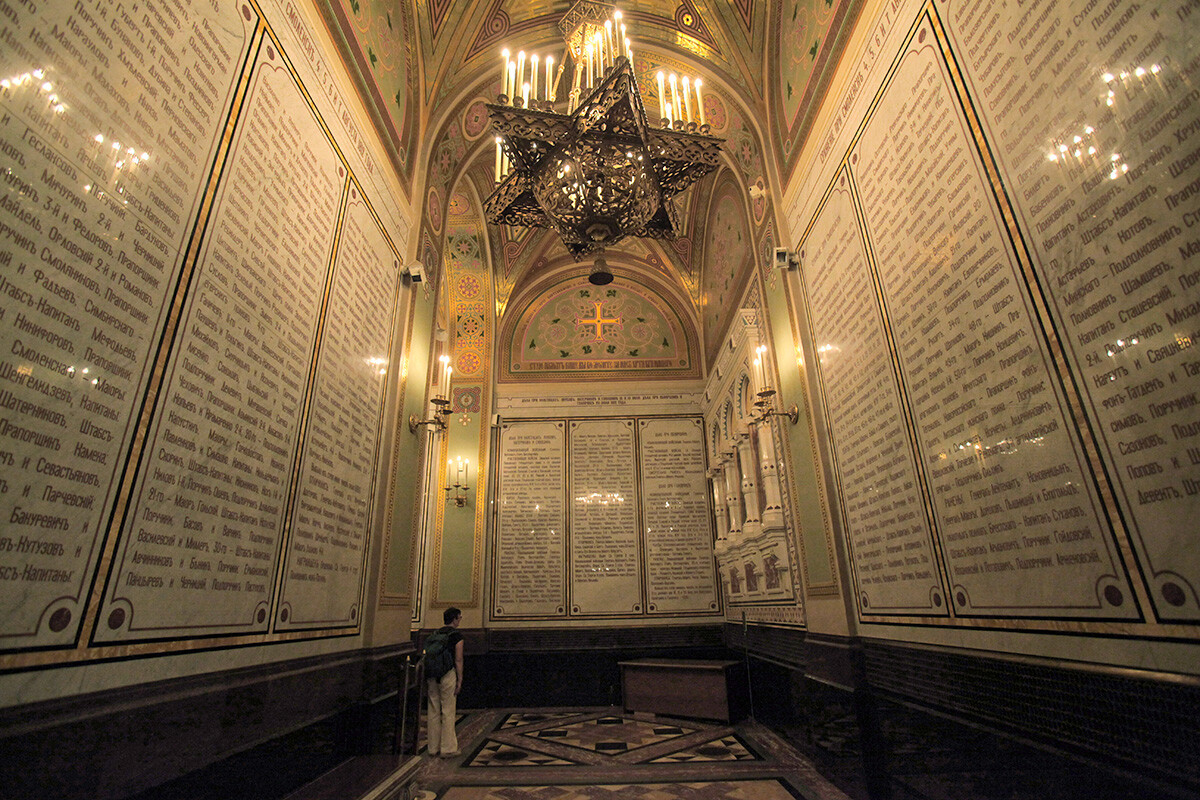
The lower gallery in the interior of the cathedral, as now, displayed marble plaques listing the names of heroes of the Patriotic War of 1812. During Soviet times, they were put to rather prosaic uses: for filling the paths in Gorky Park and in front of the building of the Academy of Sciences Institute of Organic Chemistry. The remainder, placed upside down, were used for steps at the Tretyakov Gallery. The museum only discovered this in the 1990s during a restoration project. The surviving plaques are now on display at the cathedral's museum.
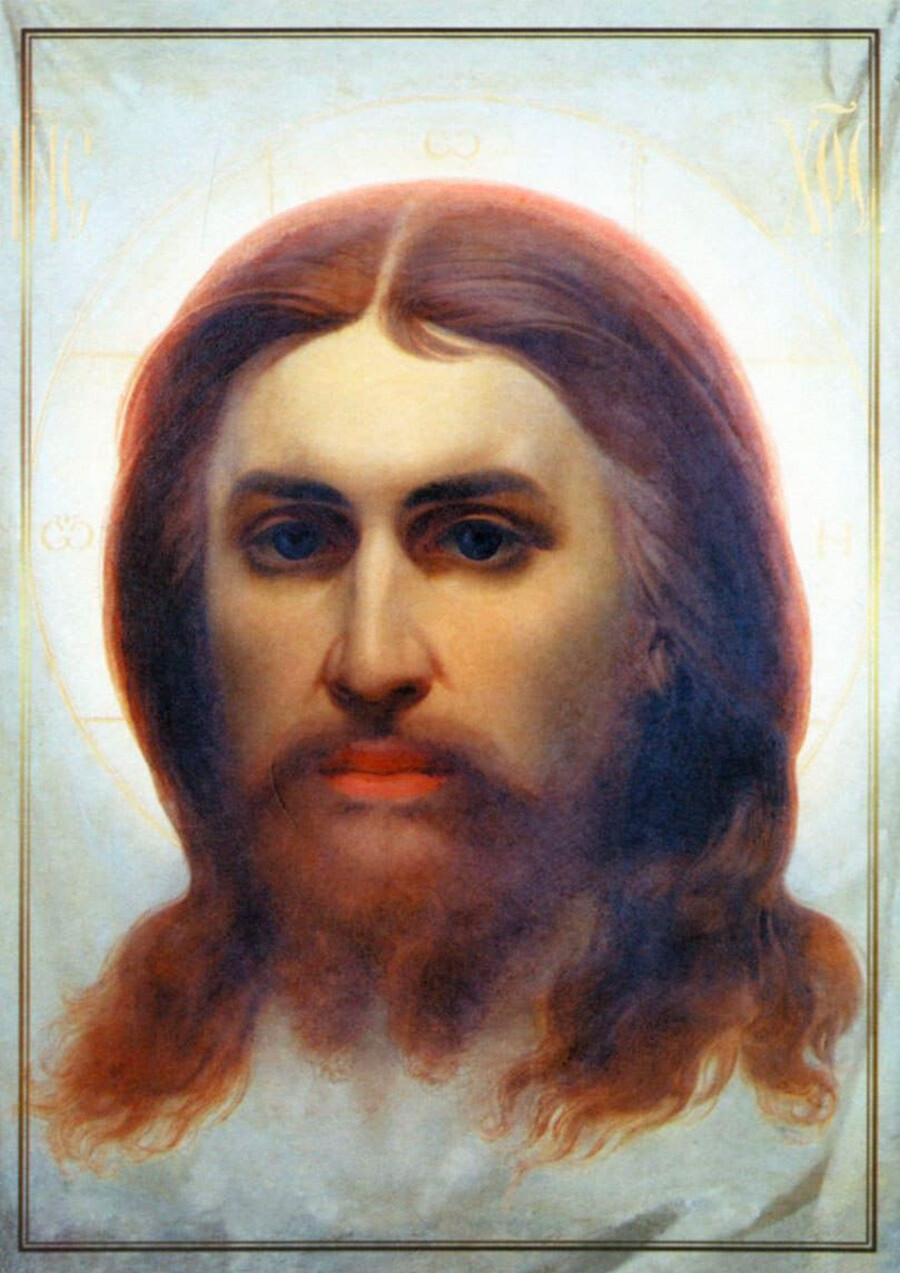
The only icon from the original cathedral that has survived is the 'Savior Not Made by Hands', painted by artist Yevgraf Sorokin. It was saved by a miracle: Alexander Vvedensky, the last archpriest of the Cathedral of Christ the Savior, managed to take the icon out and hide it at his home. In more recent times, it was returned and placed in the Church of the Transfiguration of the Savior, which is located on the lower level of the present-day Cathedral of Christ the Savior complex.
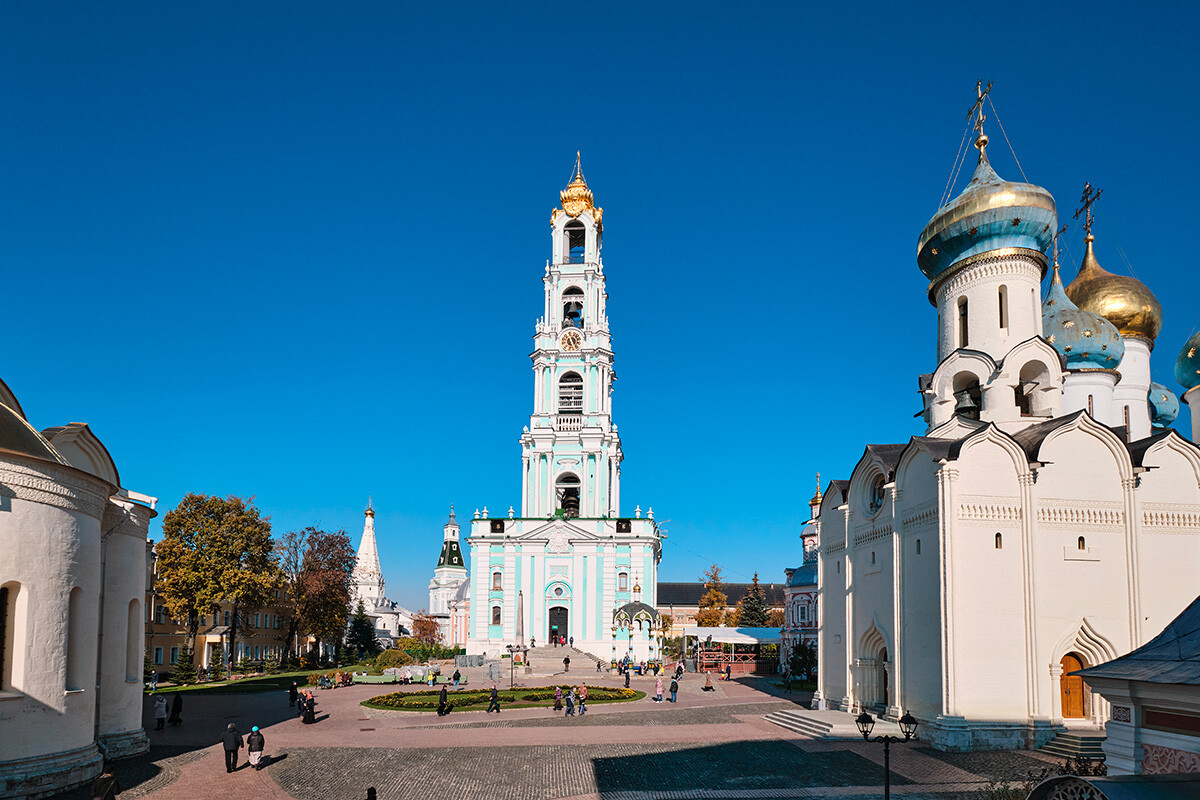
The principal bell was regarded as the third biggest in Moscow in terms of weight – the fine 26-tonner was lost along with other bells. In keeping with the campaign against religious symbols, they were thrown off their towers, smashed and sent for smelting down. Only one of the bells from the splendid group survives today – weighing 850 kg, it is installed in the bell tower of the Trinity Lavra of St. Sergius in the city of Sergiev Posad outside Moscow.
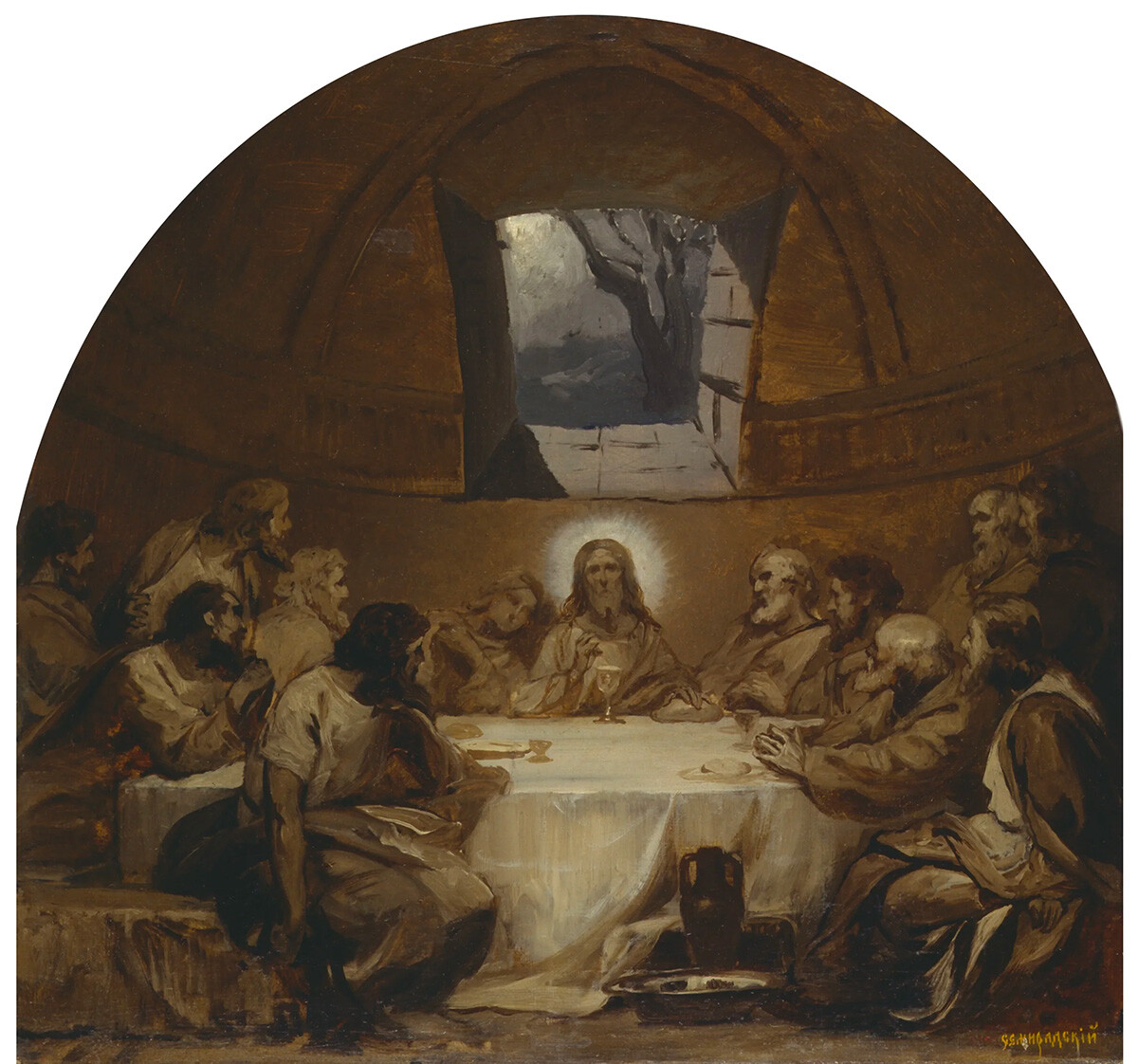
Almost 40 artists took part in painting the frescoes in the Cathedral of Christ the Savior. They included Henryk Siemiradzki, the master of antique subjects. He painted scenes from the life of St. Alexander Nevsky and several subjects from the Gospels: 'The Baptism of Christ', 'The Entry of Christ into Jerusalem' and 'The Last Supper'. The latter drew universal admiration, but only fragments of it have survived. They are kept in the cathedral museum today. One can only imagine how splendid it must have been. While people initially said that the portrayal of Alexander Nevsky made its subject look like a Roman emperor, Ilya Repin wrote that the 'The Last Supper' was the best thing in the cathedral.
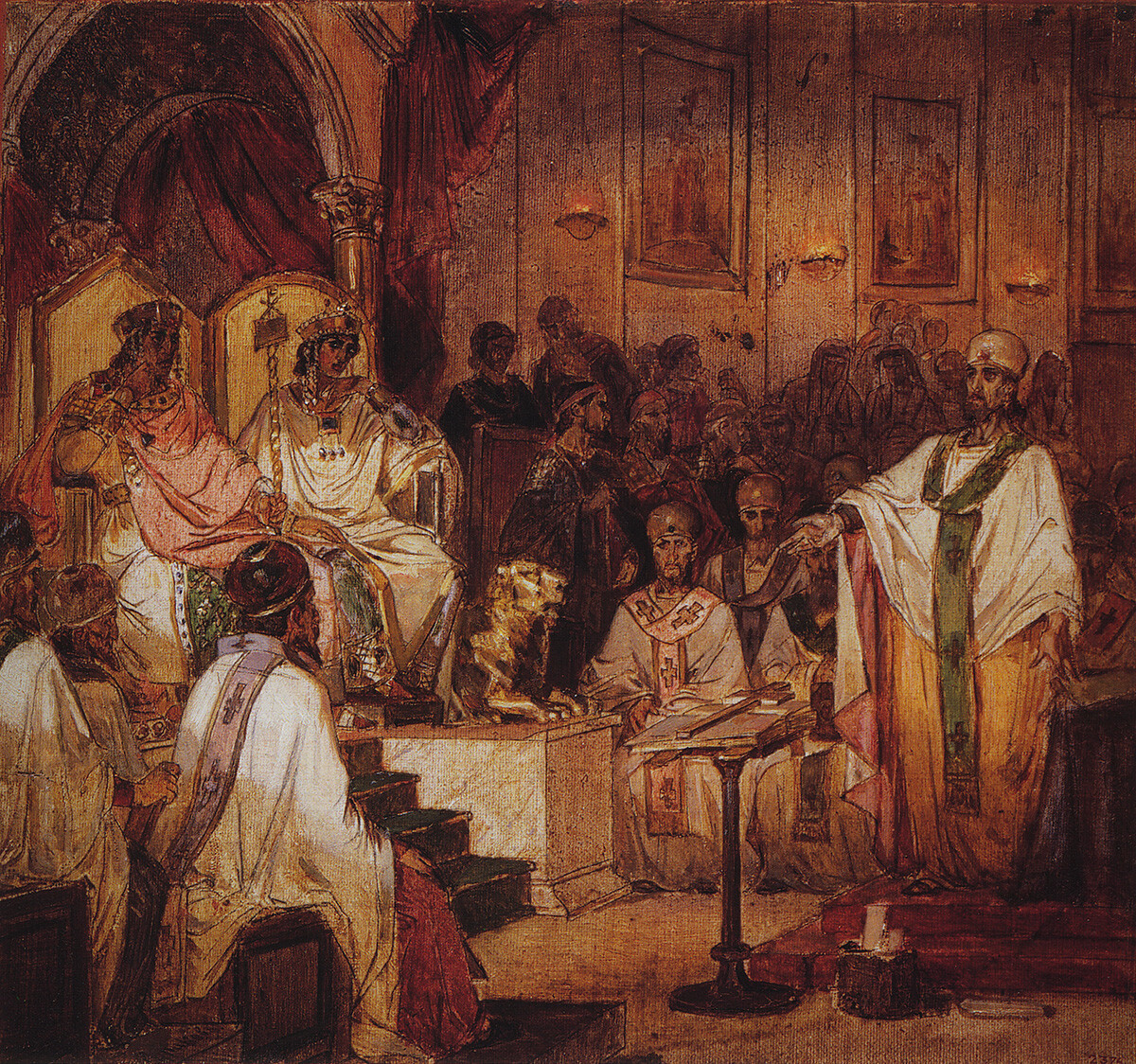
Vasily Surikov painted four frescoes for the cathedral, of which only one has survived. It depicts the Fourth Ecumenical Council of Chalcedon, which affirmed the dogma of the combined human and divine natures of Christ. Remarkably, it did not leave Moscow for a long time – it was first held in the State Historical Museum and then the Central Anti-Religious Museum and, only after the war, did it end up in Leningrad – at the Museum of the History of Religion and Atheism. Preparatory sketches for the frescoes are also in existence – they are in the collections of the Russian Museum.

In the sanctuary of the Cathedral of Christ the Savior were enormous canvases by Vasily Vereshchagin: 'Ecce Homo', 'The Bearing of the Cross', 'The Agony in the Garden', 'The Descent from the Cross', 'The Crucifixion' and 'The Entombment'. In more recent times, they ended up in Kazan Cathedral, St. Petersburg, which used to house the Museum of the History of Religion and Atheism. The canvases stood there rolled up for many years. They were returned to their historical locations after restoration.

Today, another surviving relic resides at the main altar – the throne of Patriarch Tikhon. It was successfully removed before the building was blown up and taken to Leningrad, where it was kept at the Alexander Nevsky Lavra. The throne returned to Moscow in 2000.
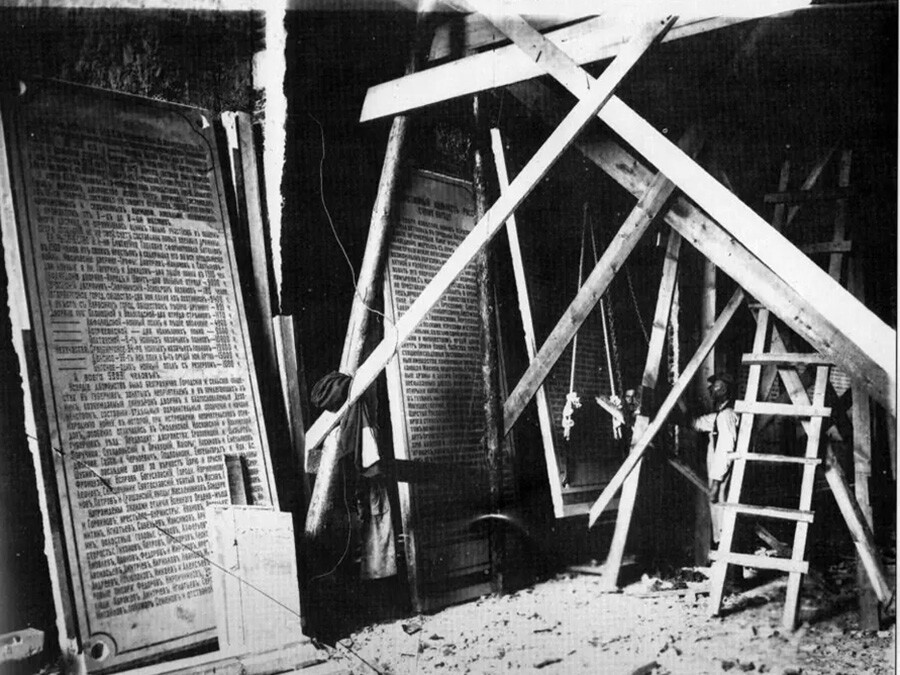
After the Bolsheviks decided to demolish the cathedral, a special commission compiled a list of what was to be preserved. A number of objects were transferred to museums – for instance, frescoes, paintings and church plates. Fragments of church banners also survived and they ended up in St. Petersburg's Kazan Cathedral – they were used to recreate modern versions. There were also some objects that even the powerful explosion did not manage to destroy. They included a commemorative plaque dating from the laying of the foundation stone in 1839.

Anything that could still be of use was utilized in construction projects: For instance, the marble slabs of the church’s facade were used, inter alia, in the construction of the Kropotkinskaya and Okhotny Ryad Metro stations.
If using any of Russia Beyond's content, partly or in full, always provide an active hyperlink to the original material.
Subscribe
to our newsletter!
Get the week's best stories straight to your inbox